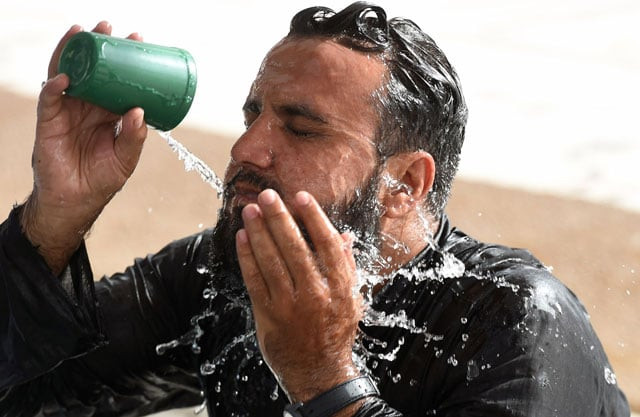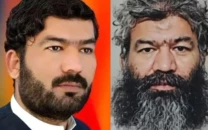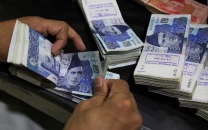Heatwave in Sindh to persist until April 18: PMD
Maximum temperatures in Karachi could range between 35°C and 37°C.

The Pakistan Meteorological Department (PMD) has issued a heatwave alert, forecasting unusually high temperatures across much of Sindh province through April 18.
Under the current conditions, daytime maximum temperatures in districts including Dadu, Shaheed Benazirabad, Jacobabad, Larkana, and Sukkur are expected to remain 6 to 8°C above normal, Express News reported.
Similarly, in Badin, Tharparkar, Umerkot, and Hyderabad districts, temperatures may exceed normal ranges by 4 to 6°C, according to the department.
The PMD also predicted occasional gusty winds in Karachi, Thatta, Sujawal, Badin, Tharparkar, Umerkot, Sanghar, Hyderabad, and Jamshoro districts during this period.
Given the prevailing heatwave, residents—particularly children, the elderly, and women—have been advised to take precautions.
The public is urged to avoid direct exposure to sunlight during peak hours and to stay hydrated.
Karachi weather outlook for next 3 days
Humidity levels in Karachi are expected to increase, intensifying the perceived temperature. The relative humidity may range between 70% and 80% in the morning and between 50% and 60% in the evening.
Over the next three days, the weather is expected to remain hot and humid at times with warm winds. Maximum temperatures in Karachi could range between 35°C and 37°C.
In light of the extreme weather conditions, experts are recommending breathable and light-coloured fabrics such as cotton and linen as the most suitable clothing to help manage heat stress.
For men, loose-fitting cotton shirts in pale colours such as white, beige and pastels are suggested to reflect sunlight and improve air circulation.
Polo shirts paired with linen trousers or lightweight chinos are recommended for those seeking both comfort and a more polished look. Heavier fabrics such as denim should be avoided, as they trap heat and reduce ventilation.
Women were advised to continue wearing traditional lawn fabric—a lightweight cotton material widely used in Pakistan’s summer clothing.
Flowing dresses, palazzo trousers, and airy tops made from natural fibres provide necessary ventilation while maintaining cultural modesty.
Accessories such as cotton scarves and chiffon dupattas offer added protection from direct sunlight without adding warmth.
Children, who are particularly vulnerable to heat-related illness, require special consideration. Experts recommend soft, breathable cotton clothing with tight weaves to help block harmful UV rays.
Long-sleeved shirts and loose trousers provide better sun protection than short garments, and wide-brimmed hats are encouraged to shield the head, face, and ears.
During hot nights, children may benefit from wearing minimal clothing, such as a nappy or light pyjamas, with a thin cotton sheet in place of heavy bedding.
























COMMENTS
Comments are moderated and generally will be posted if they are on-topic and not abusive.
For more information, please see our Comments FAQ